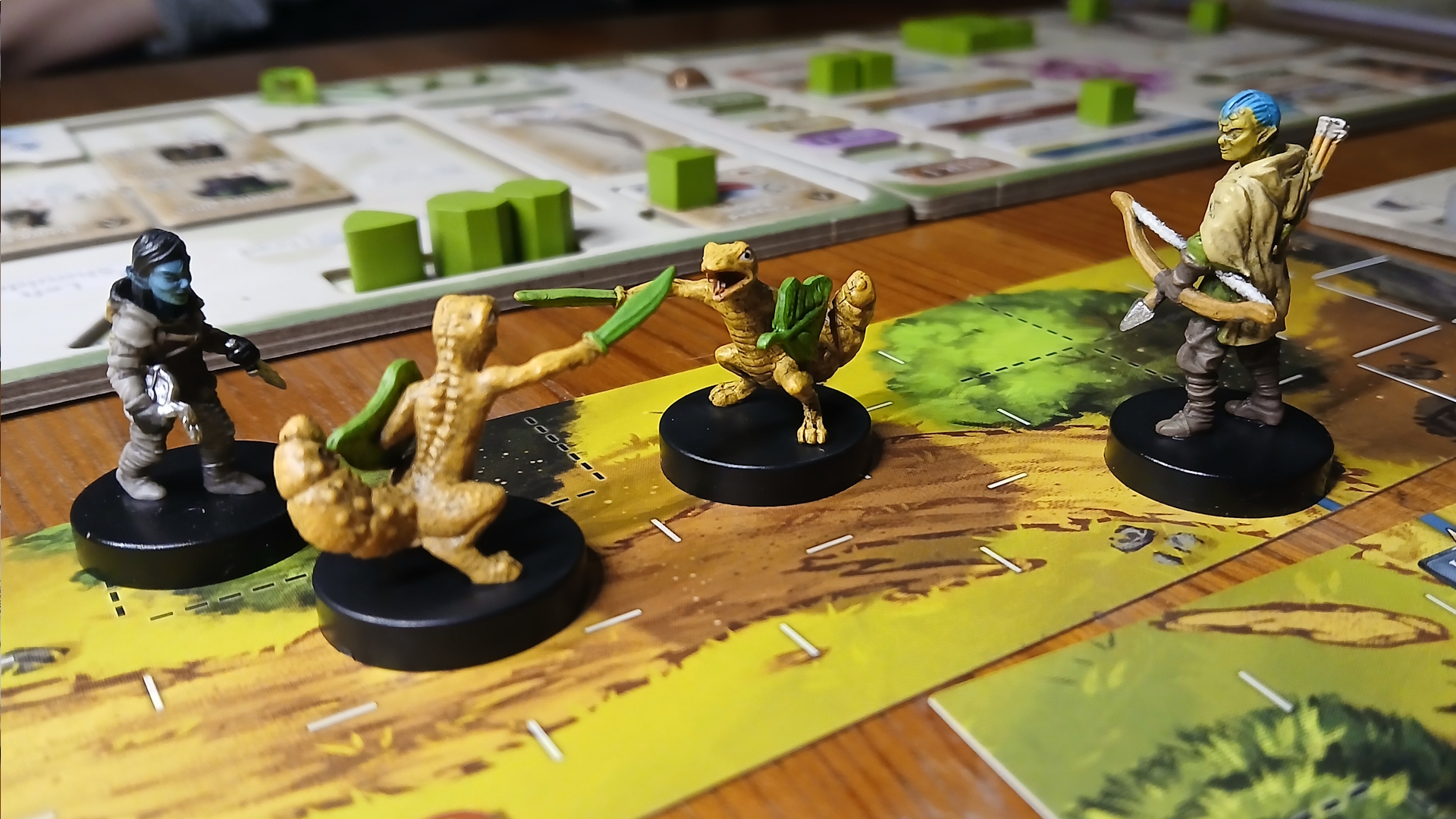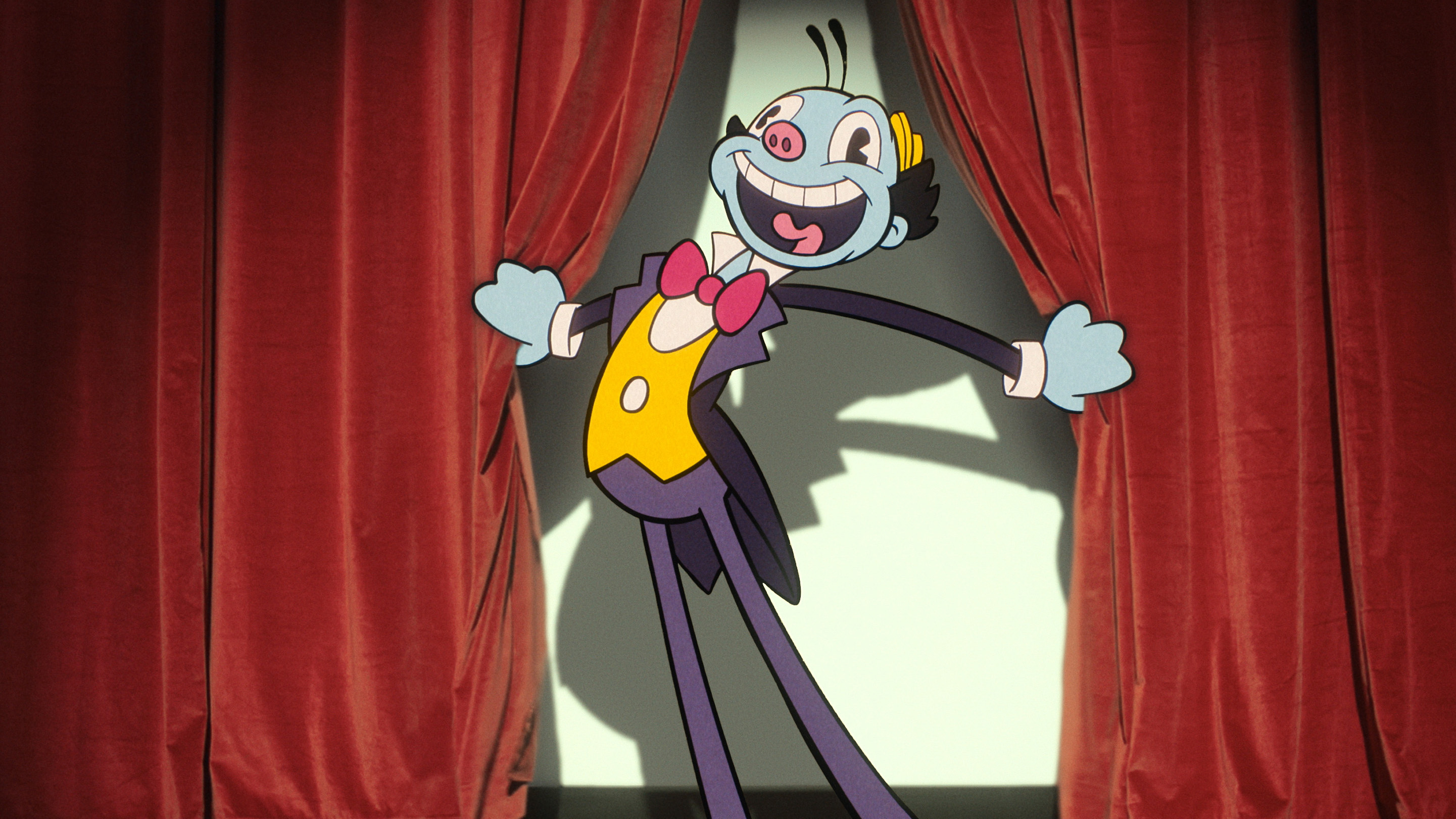I didn't expect to say it, but Doom: The Dark Ages adding a shield and a parry somehow makes it feel more Doom than ever
Hands-on | Three hours with Doom: The Dark Ages is enough to convince me these less-than-obvious additions to the series are incredibly creative, and simply superb fun
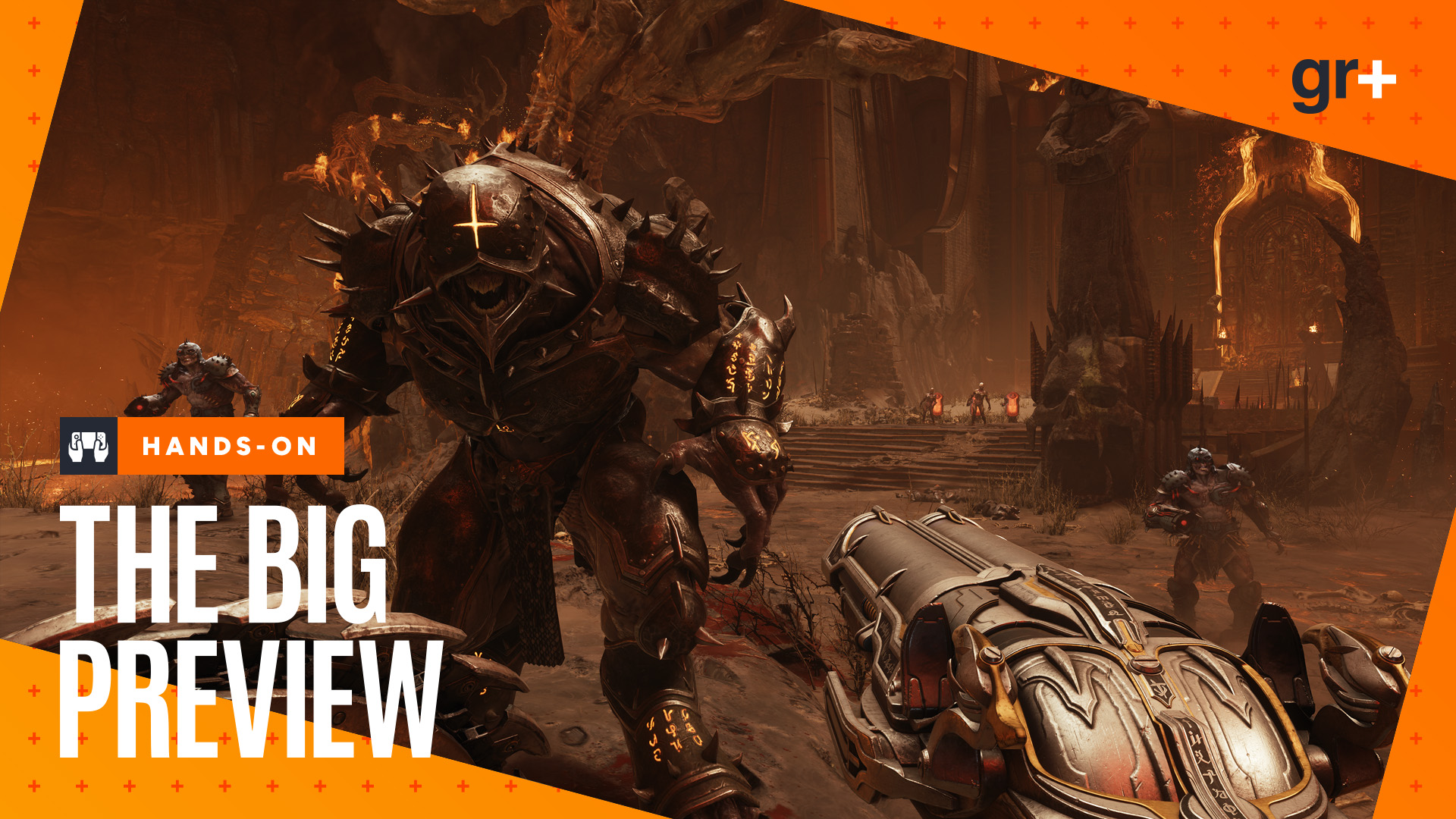
I thought I knew what Doom was. Doom: The Dark Ages doesn't fit that image at all. It has a shield. It has parries. You move slowly, deliberately. But it's not this Doom Eternal sequel that has it wrong, it was me. Far from a safe sequel, this radically shifts what you'd expect from Doom, but in a way that, well, still feels a hell of a lot like Doom. Game director Hugo Martin explains it to me succinctly: "You feel aggressive, always, in Doom. If you don't feel aggressive, it doesn't feel like a Doom game."
Doom: The Dark Age's shield saw is more than just a new option. Going hands-on with the game, I'm constantly using it, constantly thinking about it. But one thing it isn't is something to cower behind. When you raise your shield it's to allow you to charge headlong into danger. When you parry it's to knock enemies off-kilter before hitting them with some of the hardest hitting weapons ever conceived. You might move slowly and deliberately compared to Doom Eternal, but it's always with purpose. You're not in danger, you are the danger. Doom: The Dark Ages is, I'm told before my demo, built around the concept of 'stand and fight', and every moment I'm directly in control of the Doom Slayer lives up to that. Taking hits and dealing them back twofold is the most aggressive Doom has ever felt.
Lost in space
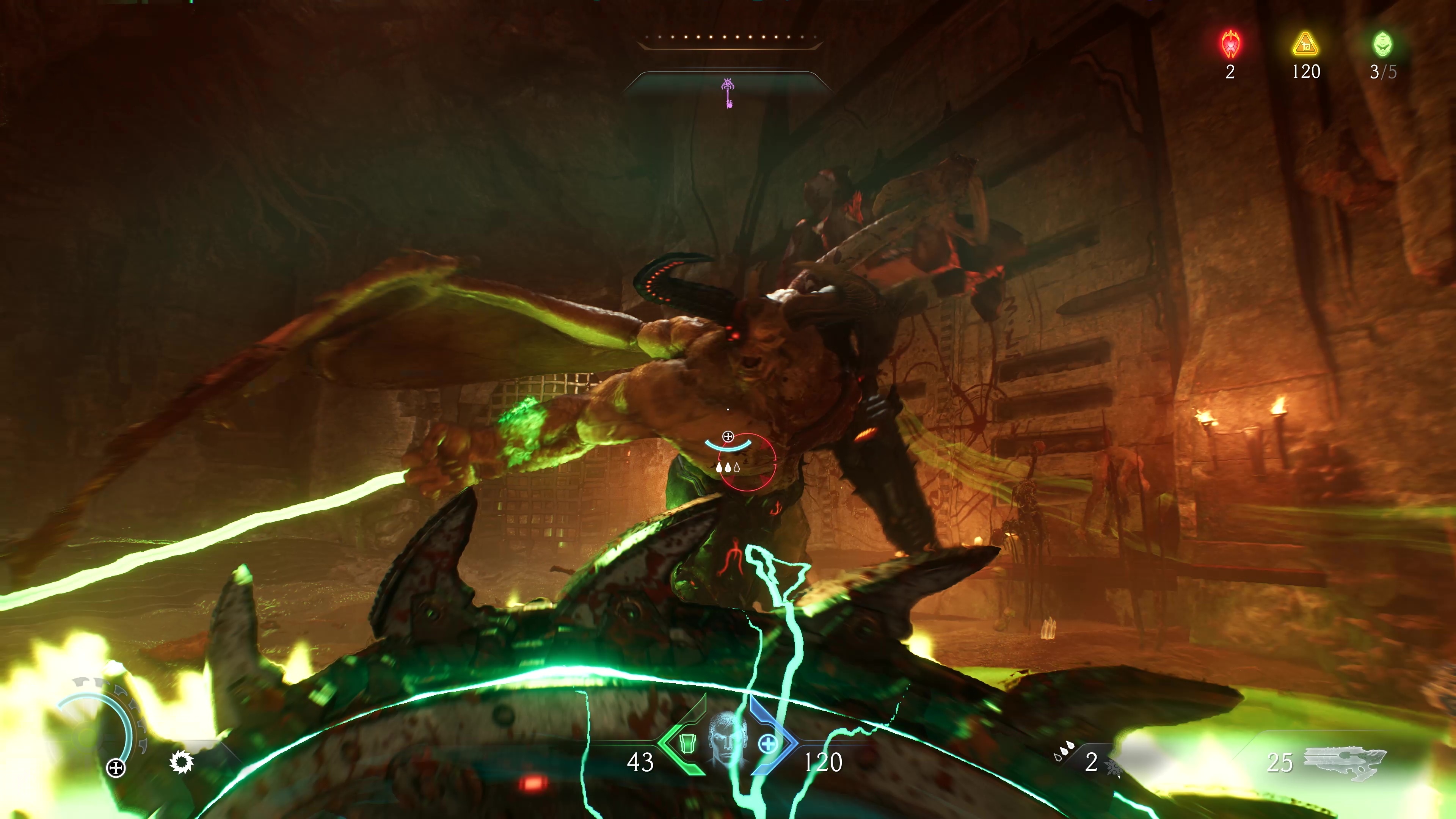
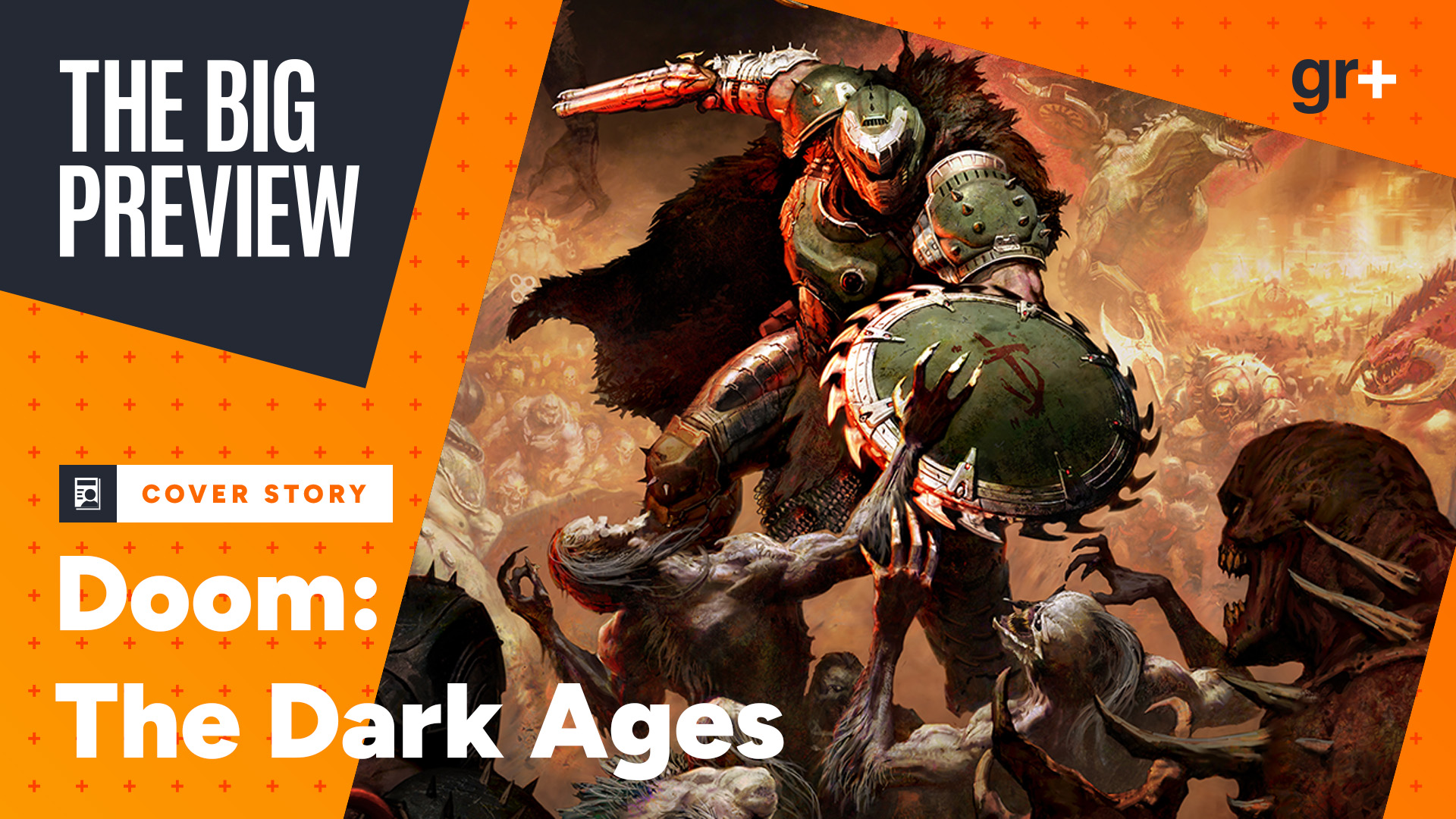
The Doom: The Dark Ages Big Preview starts here! Stay tuned for more exclusive access and deep dives over the coming days.
The Dark Ages is recognizably still Doom – or as Martin says, "it's not new but still Doom, it's new but more Doom." But a myriad of tweaks and evolutions shift just about every element of this third game of the modern era series to stand strong by itself. That's very much by design. Just as Doom Eternal took what worked in Doom 2016 and hyper-charged it to add loads more weapon options and hyper-quick platforming, this is just as different again.
The Doom Slayer has always been about aggression, but even here the purposes behind his wrath have been recontextualized. Dialling the clock back, Doom: The Dark Ages is set before the previous two games, with the Doom Slayer mind-controlled into serving the ends of gods, "on a leash" for Kreed Makyr, dropped into conflicts from an orbital spaceship at their discretion like a warhead ready to explode on hellspawn incursions.
It's the Doom Slayer's dark ages, and one for the galaxy at large as the legions of hell grow in strength – not about Earth's dark ages. The opening hours lean more heavily into the lore of Doom than ever before, bringing to life a lot of elements referred to in Doom Eternal's codex pages. Environments feature plenty of stone gothic architecture and wooden churches with a tactile feel to stomping around them – but expect to see plenty of lower-third place names about the planets the Doom Slayer is unleashed upon. It's sci-fi to the max. The opening section has me ripping and tearing through a village under attack, but still ends with a laser turret section.
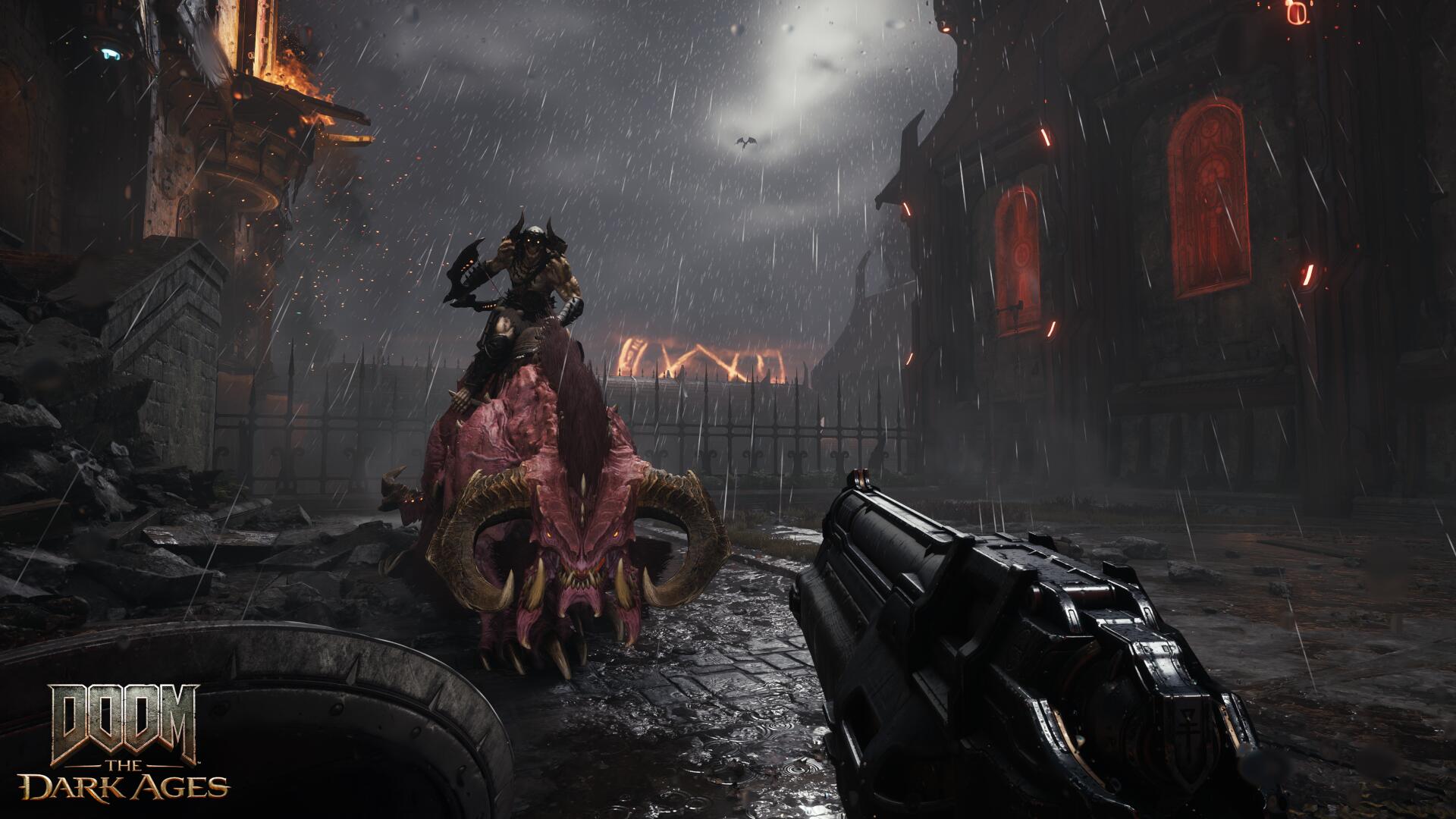
Having played lots of Doom 2016 and Doom Eternal, I jump in ready to play more of that. Then I realize I'm struggling more than I should be, taking at times heavy fire from all sides and having my armor and health shredded. Ah, that's right, I have a shield. And I'm expected to use it.
On a controller, holding the left trigger raises the shield saw, able to soak a certain amount of damage before it begins to charge up its strength again. A tap of the left bumper above instead hurls the shield, blades spinning, to cut through enemies, sticking into any larger targets it finds and stunlocking them in place. Notably, these two buttons in Doom Eternal were home to alt fire and shoulder launcher functions which (aren't quite) present here. Having the shield saw take up half the controller is no accident; it's just as vital to the core combat loop as those other options were in Eternal.
Sign up to the GamesRadar+ Newsletter
Weekly digests, tales from the communities you love, and more
Shields up
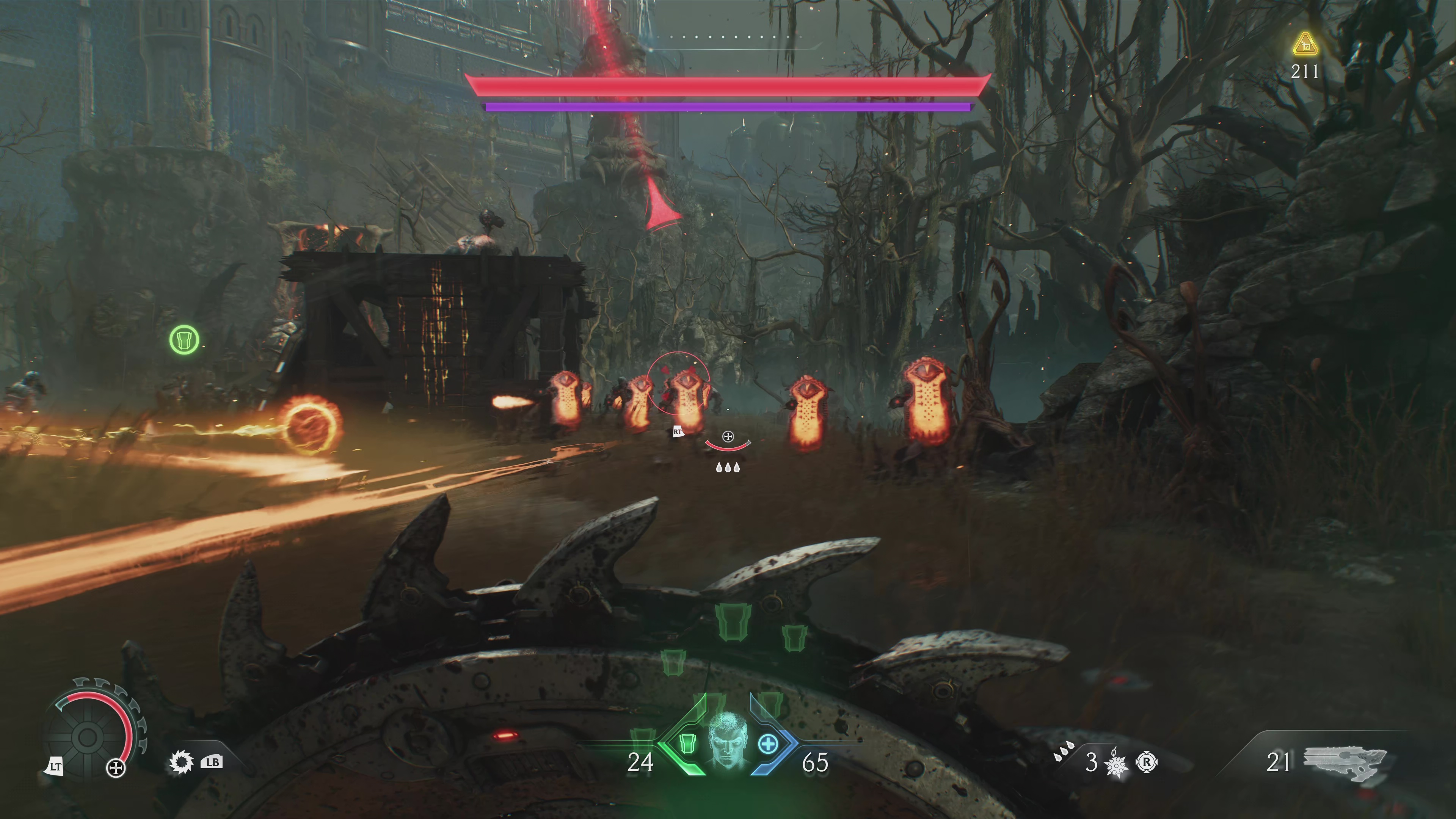
Developer: id Software
Publisher: Bethesda Softworks
Platform(s): PC, PS5, Xbox Series X
Release date: May 15, 2025
When on the move, you'll frequently have the shield up – but this can also aid in mobility as well as defense. Reticules will appear on enemies (and on some nodes), which you can then shield charge towards to quickly close the distance, whether that's to keep you away from strong demons, zip up to meet an enemy shooting down at you from a barricade, or to uncover a secret. Which is all to say that, for as powerful as throwing the shield is, you'll feel slightly depowered after it leaves your hands, meaning you have to weigh up the risk/reward and adapt your strategy around hurling the deadly disc.
And you're not the only one with enhanced defensive capabilities. Enemies too now pack shields and armor. Again, at first glance, I was worried this wouldn't feel all that Doom. But in play it doesn't feel like it makes enemies spongier – rather, it adds a new layer of action when it comes to taking them on. Hit them with a barrage of damage and their metal shields and armor will glow red, making them brittle enough for a shield throw to shatter them into pieces, distributing a wave of damage in the area. That means when you open one shield-carrying foe up to smash, the chain effect will allow you to take out whole groups in just a couple of throws.
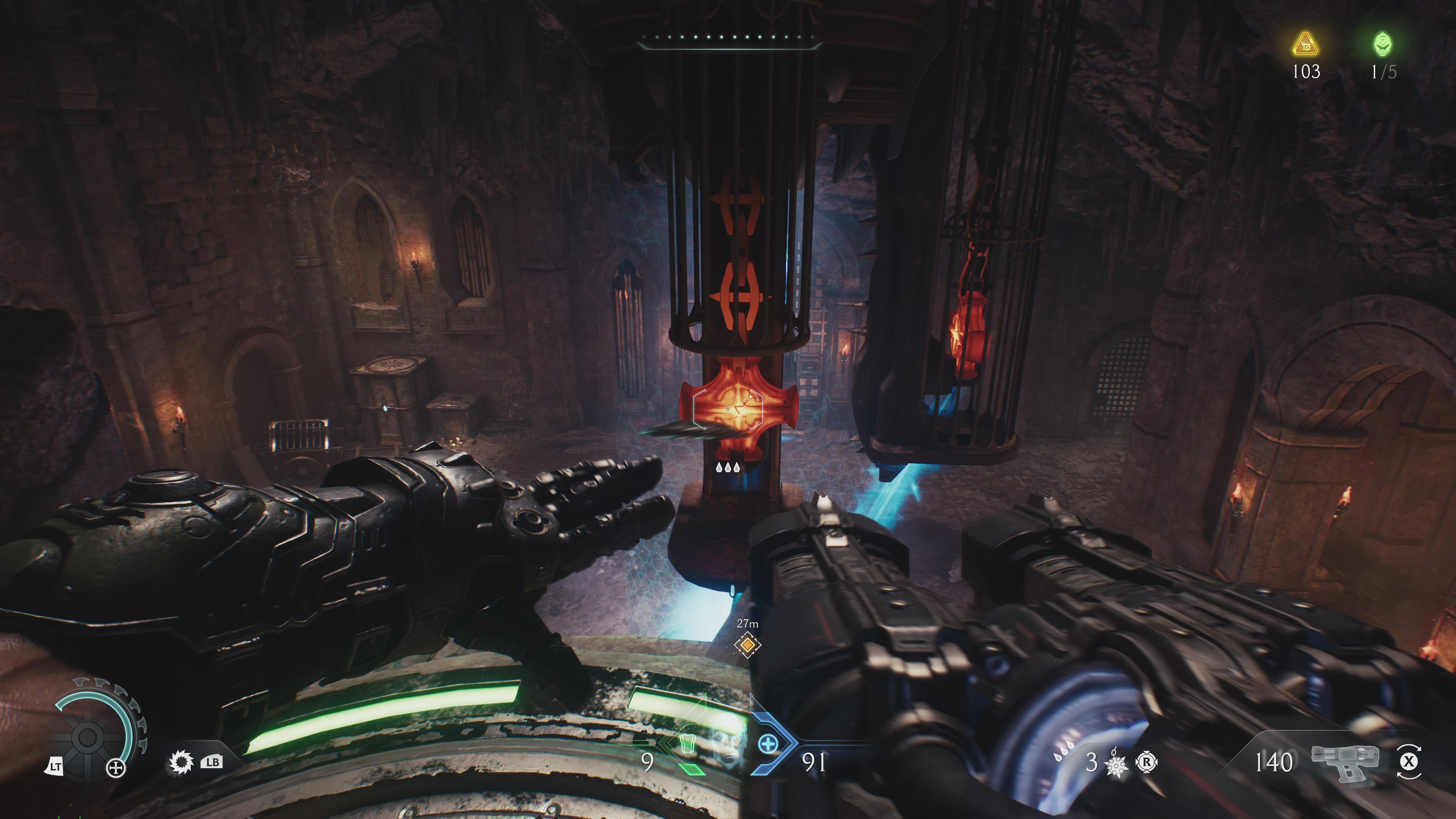
Likewise, in a later, more open-ended level, some combat zones have leader demons who are completely immune to damage until a morale meter is depleted. Rather than frustrating, this keeps you aware of an ever-present danger as you zip around mopping up foes to make them vulnerable, essentially ensuring these particular encounters are paced in a way where you're always clashing with the baddest demon at the very end. The threat they present means in these fights too you have to be extra aware of how you use the shield – keeping it up to soak damage, locking down threats, and shield charging out of the frying pan and into fire.
The flow of action, says Martin, "was very much inspired by 300. [...] There's that great tracking shot where he's moving through the crowd, and he's using his Spartan sword and shield as he kind of takes out like five, six guys. The game is built on that, you're supposed to feel like that at times." You might feel weighty, but you can still cleave through forces at speed. While there's no double-jump this time around, you quickly stop noticing it, stick clicking to sprint feeling like a natural substitute as this entry embraces horizontal conflict in its stead.
Hell's arsenal
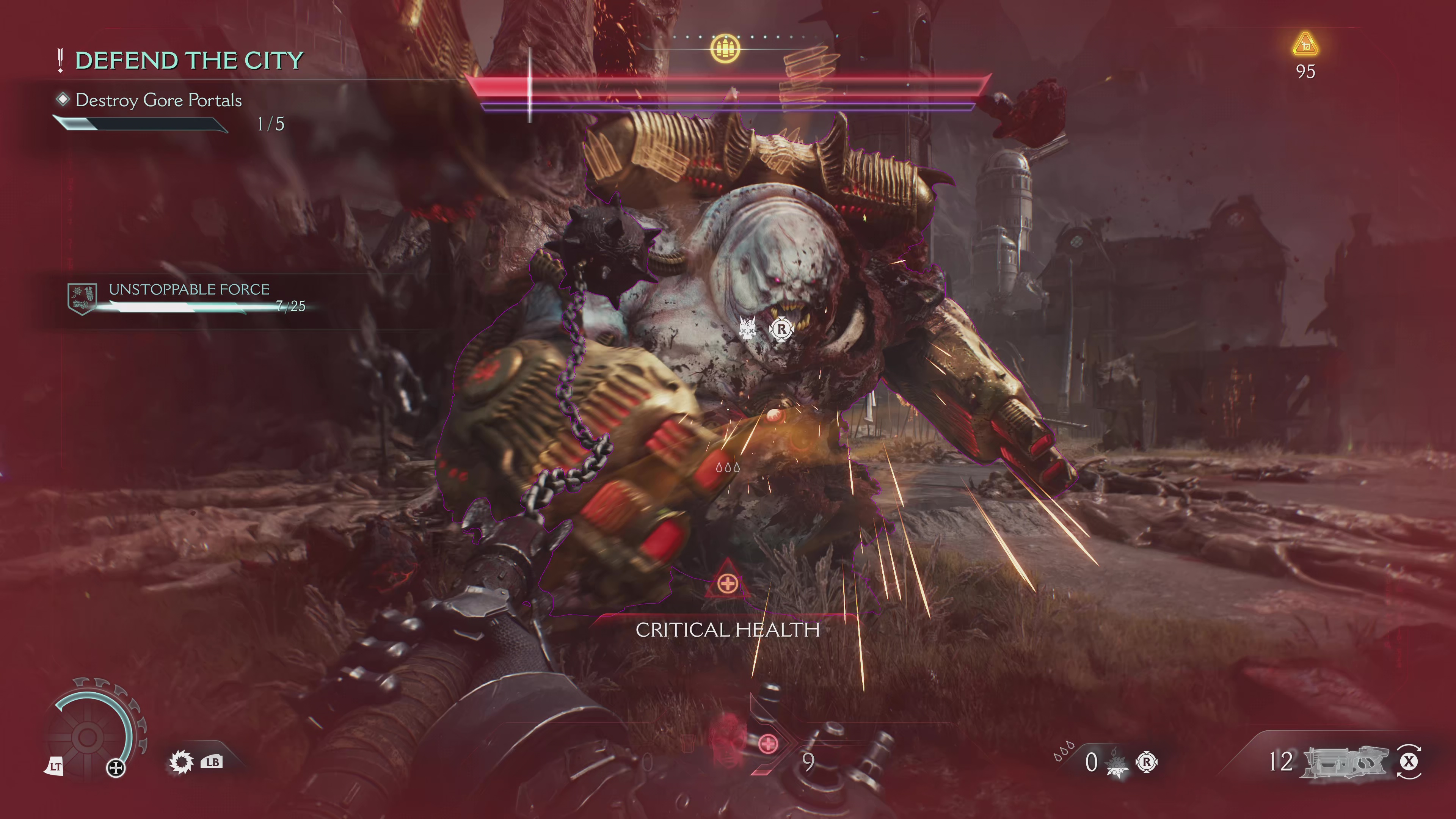
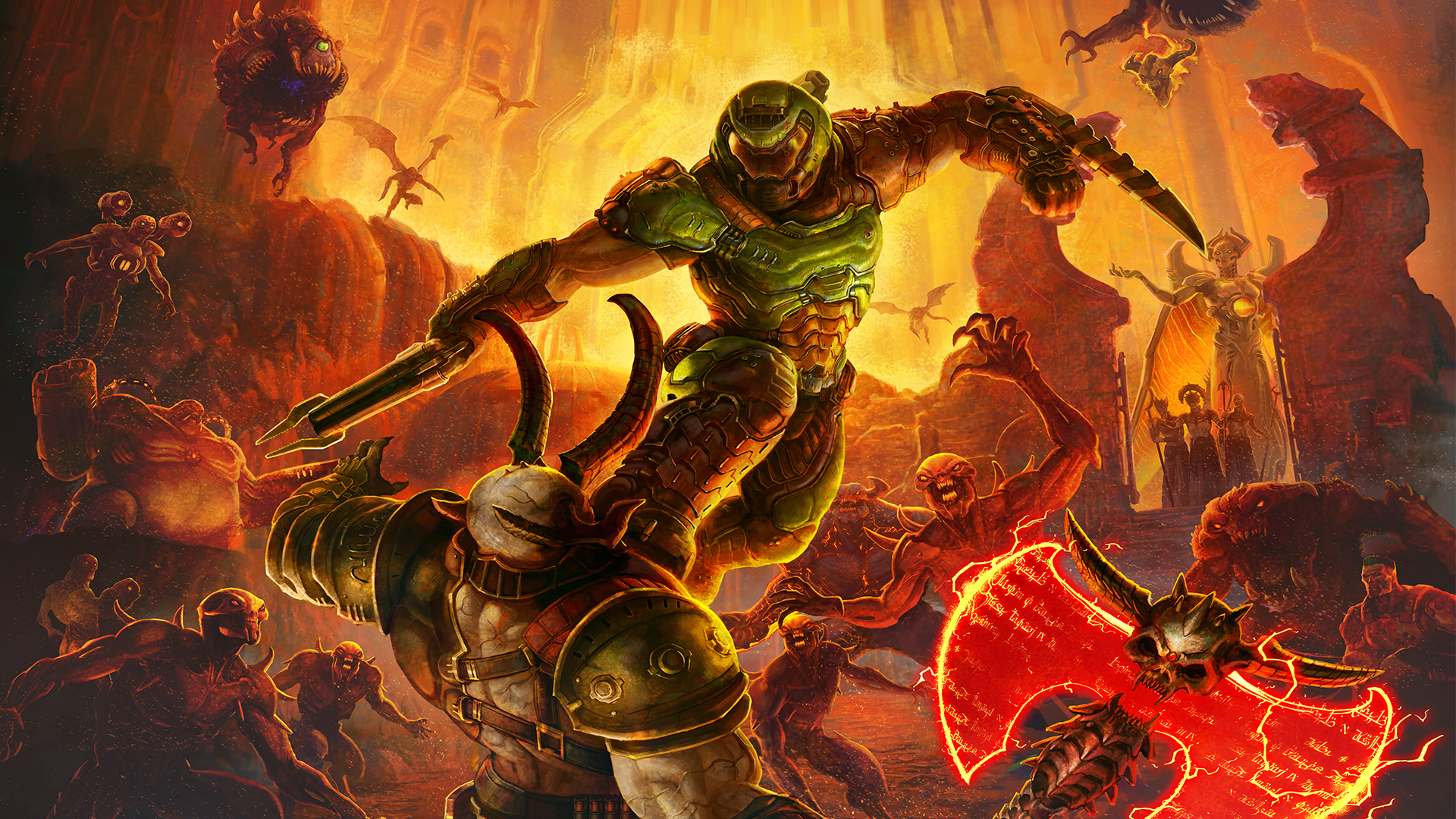
What about the last game? We said that it "screams at you to move faster and to fight harder, and you can do nothing but obey" in our Doom Eternal review.
I've spoken a lot about the shield. But the guns are, of course, back, and as inventive and exciting to unload into the nasty faces of hell than ever. Crucially, though, the shield is ever-present, something you think about even when you're choosing what gun to use next. The super shotgun, for example, does immense damage at close range – so why not use a shield charge to get close to a foe before unloading the clip?
Less emphasis has been placed on using the 'correct' weapon for each demon than in Doom Eternal, the shield instead giving you lots of ways to get creative with your playstyle to unleash damage. This feeds into upgrades – for instance, fill a foe with nails and whack them with the shield to turn them into a pin-cushion damaging nearby enemies; or, alternatively, shoot them with nails as the shield saw whirrs inside of them to ricochet blasts all around.
Melee has also been expanded, and is now a core part of combat you'll be using a lot more of than, say, the chainsaw. Serving a similar function, each melee hit of an enemy will spill out ammo to collect, expending a charge of energy. The starting gauntlet, for instance, has three charges, whereas the later mace only has one, but hits much harder (with flails and others in between). But rather than just working around using this energy and moving on until you hoover up more charge or enough time elapses, melee is encourages aggressively charging into enemies. Because, yes, if you remember, Doom: The Dark Ages has parries. A lot of parries.
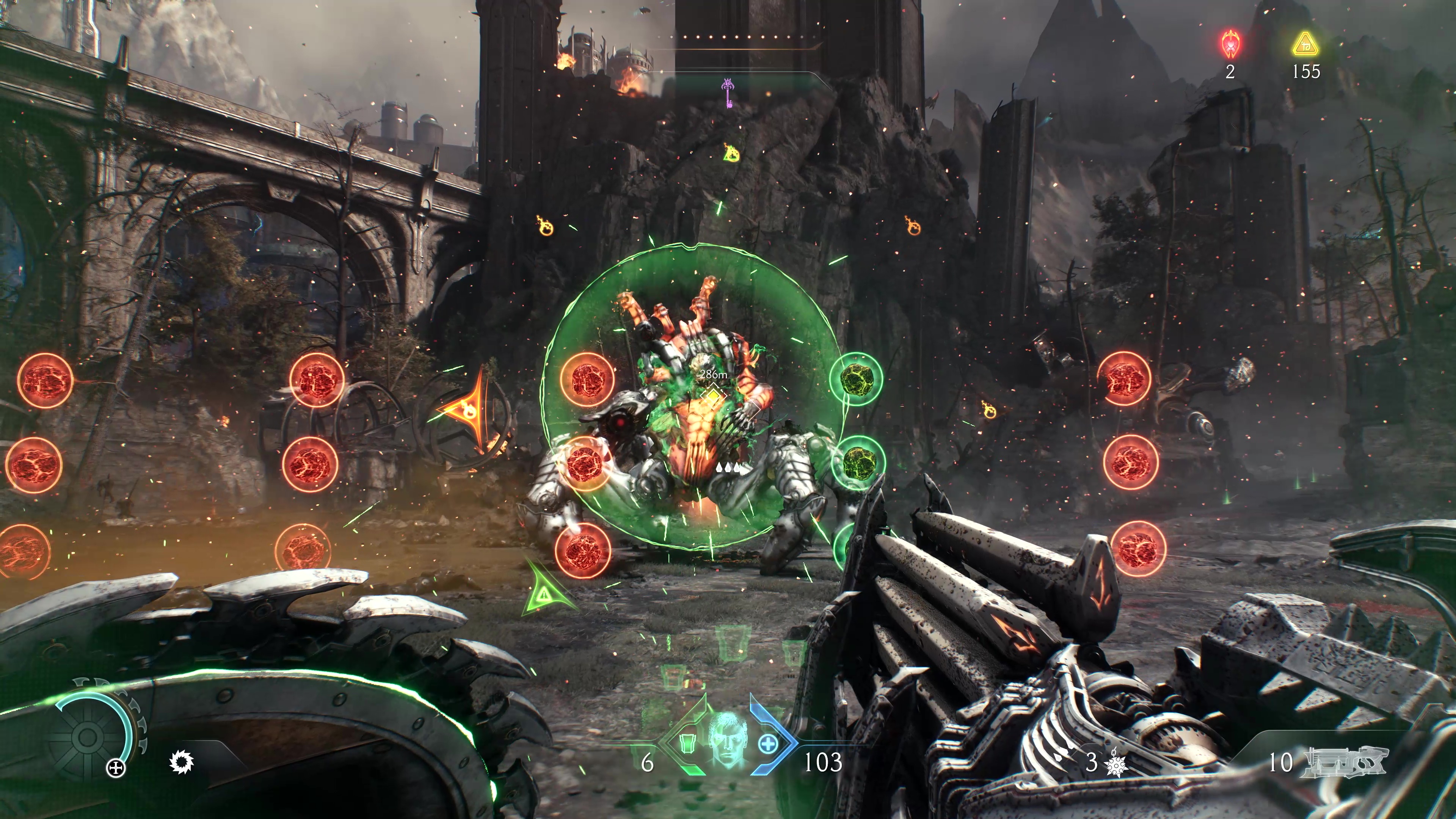
Whether it's an Arachnotron shooting out a wave of attack orbs in your direction with one green orb among them, or a Cyberdemon whipping out a green slash, this color always means you can use the shield to whack them back to sender with a satisfying gong-like 'pwong'. Reverberating out from that knockback will be a shockwave of energy that hits enemies but also charges up your melee. Which means, yeah – you can stand and fight. Cyberdemon tries to hit you, you bonk it back, hit it with a flail, then do the same before finishing it off. No need to run and gun. Just plant your feet and bring the pain there and then.
There's a real satisfaction to the rhythm of parrying and meleeing here, and that's before we even get to the shield runes that can enhance that further, not included in my demo. "We've got four different shield runes," Martin tells me. "One of them is like a shoulder mounted turret. The other one is like a series of ethereal daggers that comes flying out, you know, and does AOE damage and targets enemies in the space."
So far it's a great loop, but it does come at the cost of some of the old systems, most notably the revised glory kills. What used to be an epic kill moment now feels a bit limp in comparison to dedicated melee. No longer always locking you in place, they now happen in real-time from any angle, but that can sometimes amount to feeling like you just kick an enemy before they crumple. I always appreciated the high-impact, quick animations of the glory kills in the last two games, and the moment to breathe they offered, so it's a shame they feel less satisfying here – though it's hard to grumble when this new element almost supersedes it at times.
Robot wars
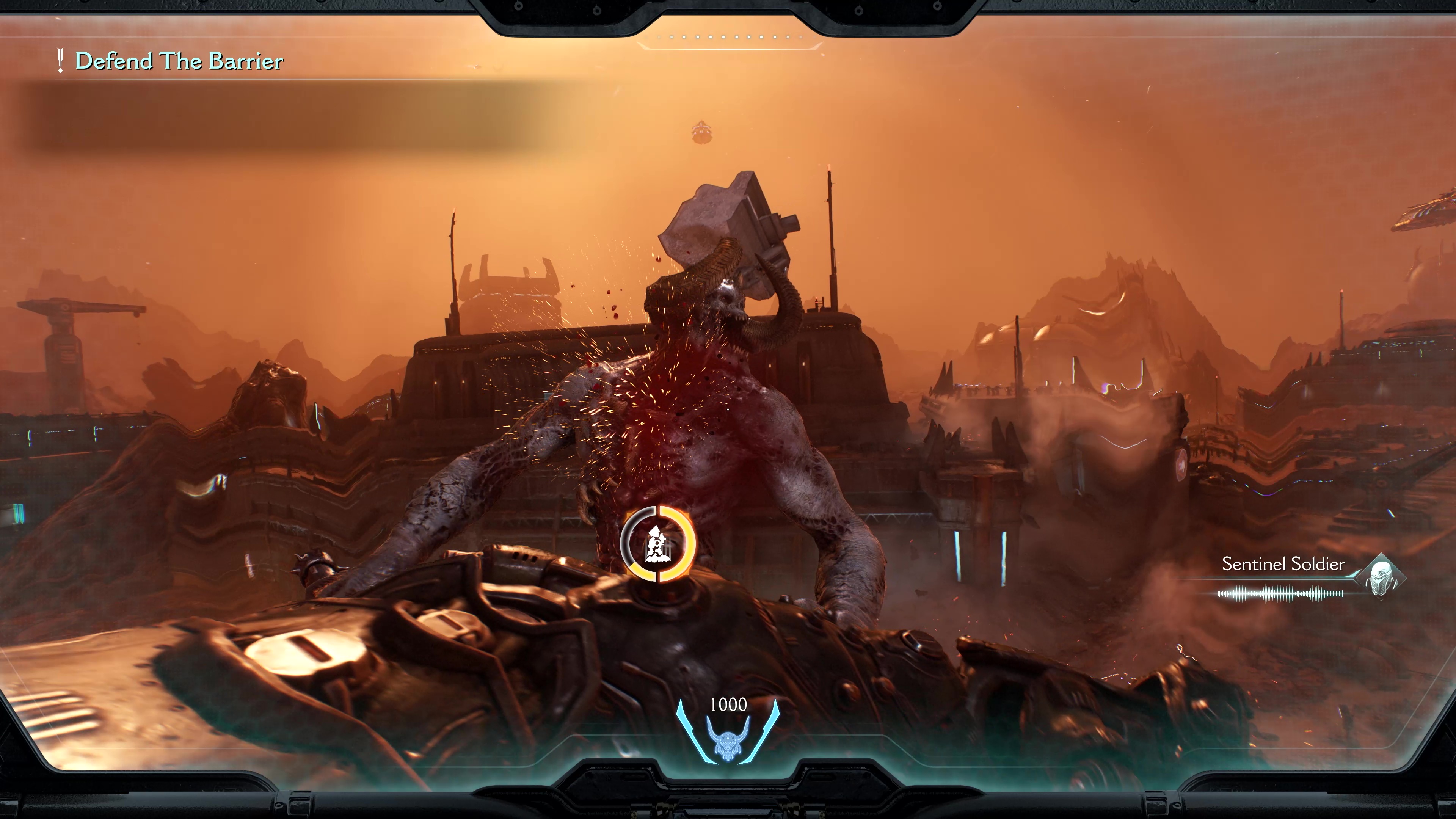
"What does come as a surprise is just how different Doom: The Dark Ages feels from what I'd expect, while still feeling extremely Doom."
You're not always standing and fighting just as the Doom Slayer on the ground, though. "We wanted to put mechs in the game," says Martin about Doom Eternal, which teased many gigantic demon titans and Atlan mechs. It had a real sense of scale, making you feel tiny in the middle of some absolutely massive environments. This time around, you get to jump into an Atlan itself to pilot one of the honking gigantic mechs. Doom: The Dark Ages doesn't feature multiplayer like Doom Eternal, centering the campaign itself, and both Hugo Martin and executive producer Marty Stratton tell me ditching the "live service" elements allowed them to free up resources to bring the Atlan sections, as well as dragon sections to life. "They're not just cheap gimmicks. We approach them as almost a game within itself," notes Stratton.
My hands-on with the Atlan mech is brief, amounting to little more than a few hallways where combat is tutorialized. There's a heft to both your and enemy movement, which makes sense because of their size. Most encounters here are built around perfect dodging green parry-style blows to supercharge your offense and finish them off (though you can also glory kill as usual). Mechanically, I appreciate the throughline in the sense that verbs as the Doom Slayer, are also present here.
But, though I'm conscious this is a very brief section, I find the Atlan has way less sense of power and impact than playing the Doom Slayer as usual. Exchanging blows and gunfire feels very lightweight compared to your on-foot arsenal, and the sense of scale that's impressive when you're on the ground doesn't hit me the same way in the reverse – feeling more like you're looking at a battlefield of Warhammer minis. I'm not sold by these sections yet, but there's more than this in the full game, so it can hopefully strike a better balance on release.
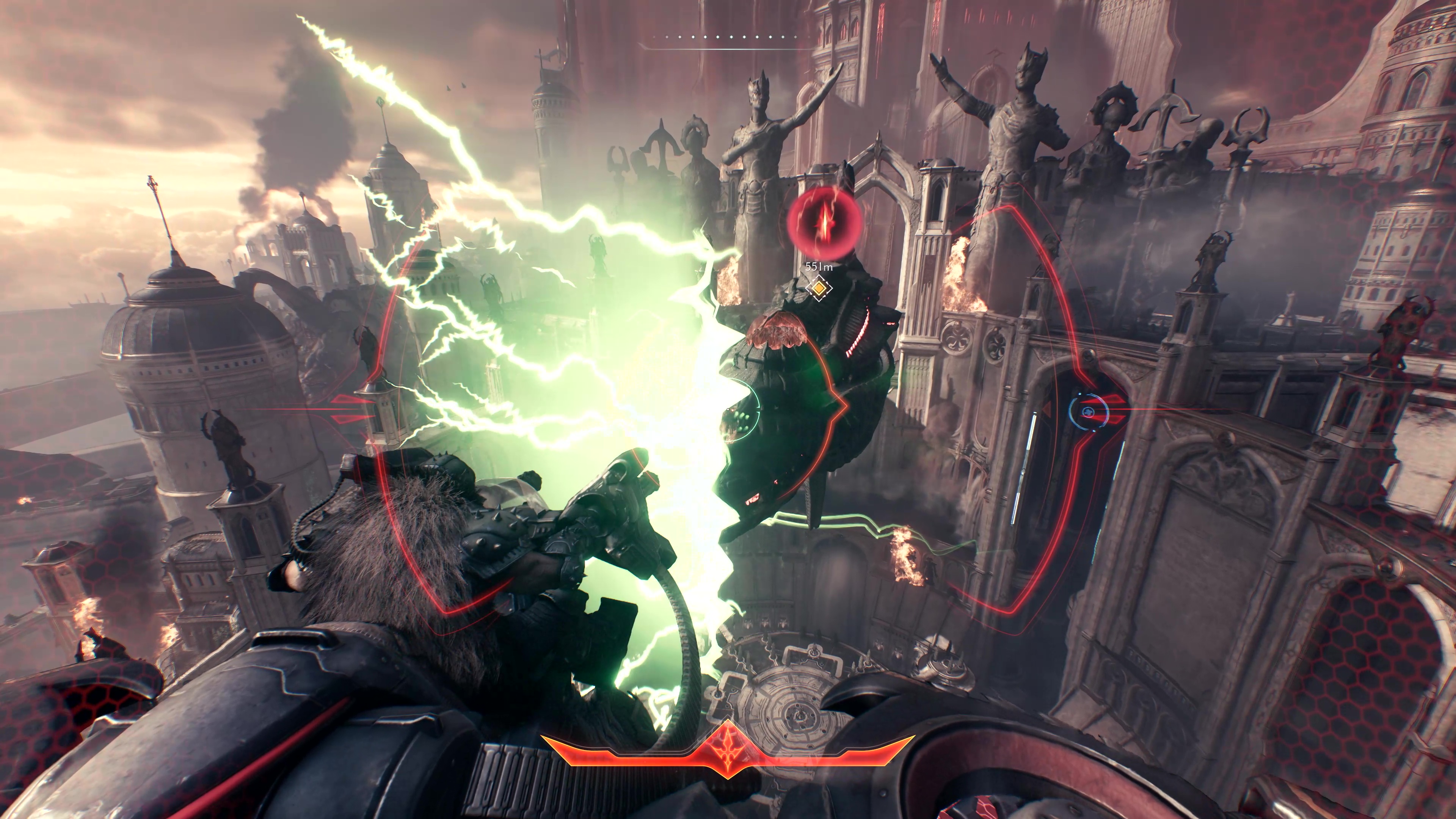
I feel similarly about the dragon section I get to go hands-on with. Seeing the Doom Slayer mount a dragon with cybernetic wings, in play the creature feels like an attack helicopter. Able to boost through caverns at speed, it can also ascend and descend on a dime, and even lock into place for you to more accurately aim cannons. When locked on, the dragon attaches its aiming to a particular enemy or structure, and opposing fire can be dodged in certain directions to (again) supercharge your offense.
At times there's a satisfaction to hitting the dodge at the right time to boom-boom-boom explode a series of cannons on a hell carrier. But until supercharged, the cannons can feel like pea shooters, and in the build I play the snapping to enemies feels a bit wonky, meaning sometimes it feels like I'm dodging attacks as if they're in front of me when they're actually happening to the side.
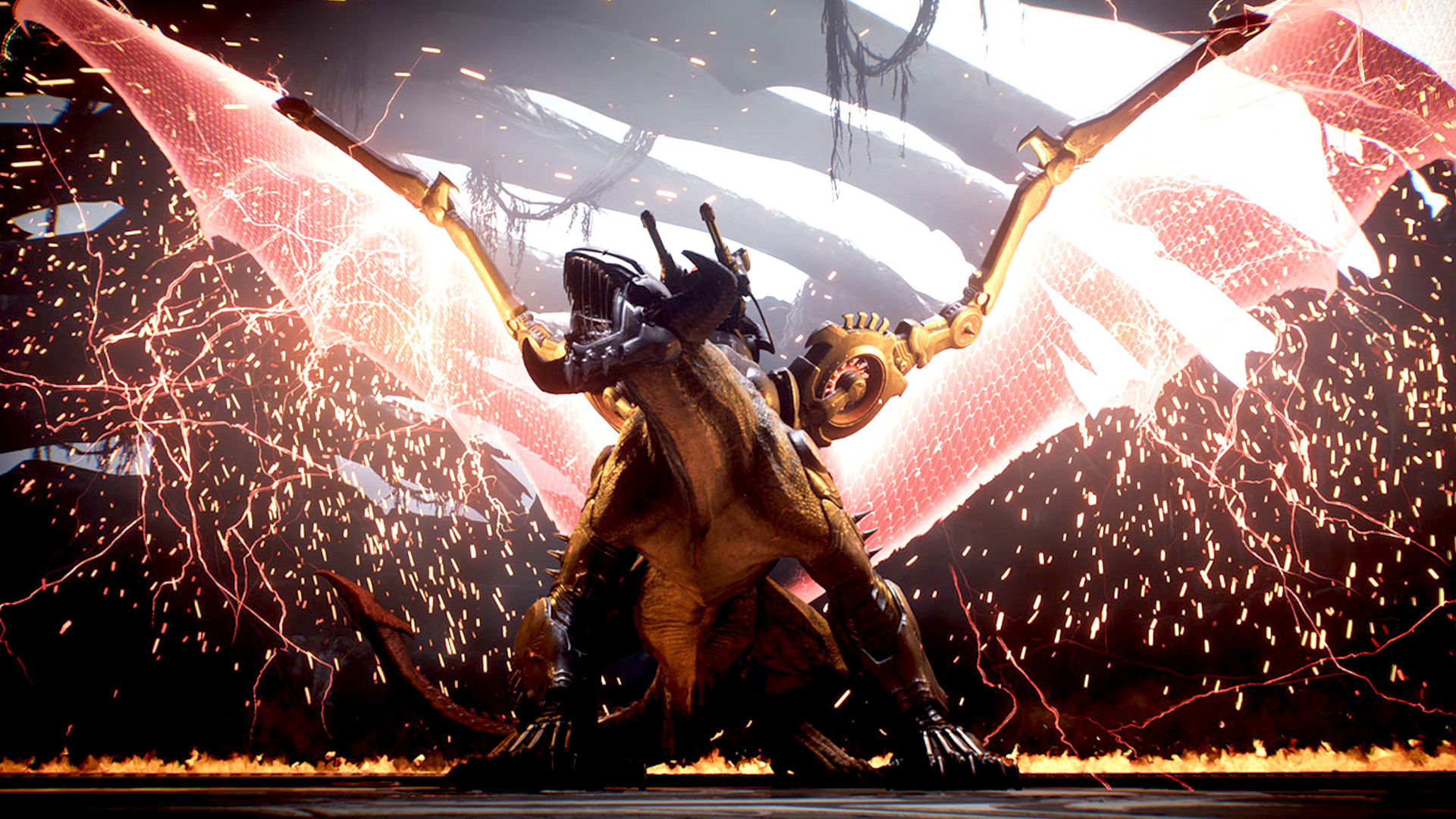
This dragon section, however, does begin to win me over when I get more into the pacing of the level I'm playing as a whole. Tasked with blowing up four hell carrier ships before finishing off enemy forces, it has the dragon combat punctuate moments where it lands and you jump off to dish out damage boots-on-the-ground before hopping aboard again to your next objective. Destroying each hell carrier manages to be varied even though they're the same class of ship, one having me fight through the whole thing, while another has it crash in the middle of a town I have to fight through to get back towards it.
It might come as no surprise, though, that my favorite parts of Doom: The Dark Ages are the bits where you get to properly play as the Doom Slayer, and less so the parts where that's more radically changed. But what does come as a surprise is just how different Doom: The Dark Ages feels from what I'd expect from Doom, while still feeling extremely Doom. While I'm yet to be charmed by every departure, every addition to the core loop feels like an amazing idea that I'd never have thought would work for Doom in a million years, but feels so natural to play here. "We always want to make a different game," says Martin. "Nothing we do is necessarily a reaction to what we did before."
If Doom: The Dark Ages can pull it off, it might join our best FPS games list!

Games Editor Oscar Taylor-Kent brings his Official PlayStation Magazine and PLAY knowledge to continue to revel in all things capital 'G' games. A noted PS Vita apologist, he's always got his fingers on many buttons, having also written for Edge, PC Gamer, SFX, Official Xbox Magazine, Kotaku, Waypoint, GamesMaster, PCGamesN, and Xbox, to name a few.
When not knee deep in character action games, he loves to get lost in an epic story across RPGs and visual novels. Recent favourites? Elden Ring: Shadow Of The Erdtree, 1000xResist, and Metaphor: ReFantazio! Rarely focused entirely on the new, the call to return to retro is constant, whether that's a quick evening speed through Sonic 3 & Knuckles or yet another Jakathon through Naughty Dog's PS2 masterpieces.
You must confirm your public display name before commenting
Please logout and then login again, you will then be prompted to enter your display name.
